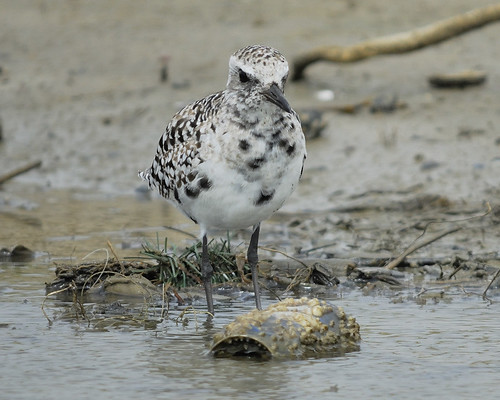tags: Black-bellied Plover, Grey Plover, Pluvialis squatarola, birds, mystery bird, bird ID quiz
[Mystery bird] Black-bellied Plover, also known as the Grey Plover throughout much of Europe, Pluvialis squatarola, photographed at Bolivar Peninsula, Galveston County, Texas. [I will identify this bird for you in 48 hours]
Image: Joseph Kennedy, 14 April 2010 [larger view].
Nikon D200, Kowa 883 telescope with TSN-PZ camera eyepiece 1/400s f/8.0 at 1000.0mm iso400.
Please name at least one field mark that supports your identification.
This mystery bird might be a little tricky to ID, but once you have figured out the species, you'll realize it has several interesting features that make it easy to ID during breeding season or from its skeleton. Can you tell me what these features are?
- The Black-bellied Plover is the only American plover that has a hind toe on its foot, although, as psweet mentions in his comment, this tiny toe difficult to see in this photo. Actually, the hind toe is so small that it is difficult to see at all in the field (although you can see it if the bird is in-hand, or if you are looking at its skeleton).
- The Black-bellied Plover is the largest North American plover.
- The Black-bellied Plover can be found on six different continents during the winter season, but breed only on the Arctic tundra.


At least one of those features isn't visible in this shot, I'm afraid.
Not related to identifying birds, but I got an email from a colleague about someone who presented a talk on the effect of volcanic ash on birdies and bird migration (among a million other things). Just contact details though; no presentation material.